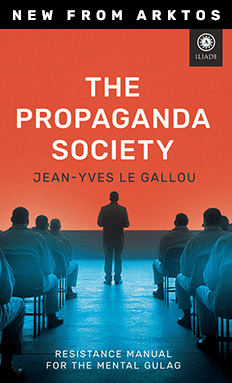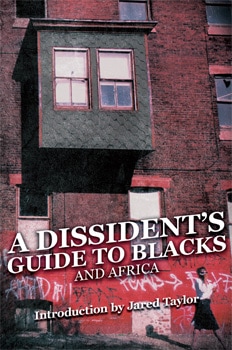Bus by Bus, Texas’ Governor Changed Migration Across the U.S.
J. David Goodman et al., New York Times, July 20, 2024
The autumn of 2021 delivered a shock to the state of Texas. More than 9,000 migrants crossed the border on a September day into the town of Del Rio and huddled in a tent camp under a bridge. Thousands more came later that week from countries all over the world, challenging the town’s ability to handle them.
The following spring, Texas opened a new frontier of its own. On April 13, a bus pulled into Union Station in Washington, D.C., carrying 24 migrants who had been offered a free ride from Del Rio, chartered by the state’s Division of Emergency Management. More buses arrived in the capital over the next several days.
Washington’s mayor, Muriel Bowser, suggested that many of the migrants had been “tricked” into riding the buses by the Texas governor, Greg Abbott. The White House called it a “political stunt.”
In the two years since Mr. Abbott dispatched the first buses from Texas, the busing program has turned into a significant part of the country’s transportation infrastructure for migrants.
A New York Times analysis of state records, immigration data collected by Syracuse University and records from the destination cities, as well as interviews with dozens of migrants, city officials and immigration organization leaders, show that the Texas program is continuing to expand its reach — new target cities include Boston, Detroit and Albuquerque — and helping to reshape migration across the United States.
For every five migrants who had immigration court hearings scheduled in New York, Chicago or Denver over the last two years — a clue to where they planned to live — one migrant traveled to those cities on a state-funded bus from Texas.
While Mr. Abbott did not create the migrant crisis that reached a peak at the end of last year, the analysis showed, he amplified and concentrated it. He took what otherwise might have been the slow diffusion of migrants from the border to cities and towns across the United States, and directed it at just a few places.
“I took the border to them,” Mr. Abbott told a cheering crowd at the Republican National Convention, where drastically curbing migration, a centerpiece of former President Donald J. Trump’s campaign, has been a frequent theme. “Those buses will continue to roll until we finally secure our border.”
In doing so, he appears to have succeeded in his stated aim: to shift the conversation around immigration in the United States, forcing Democrats to demand better border security and President Biden to reverse many of his pledges for a more welcoming immigration policy.
“If one of his goals was drawing attention to what happens at the border in a way that many interior cities don’t feel on a regular basis, then yes, that was successful,” said Camille Joseph Varlack, the chief of staff to Mayor Eric Adams of New York.
New York has spent more than $5.1 billion so far to handle the recent surge of arriving migrants — not all of whom arrived on Texas buses, of course — and the number was expected to rise to $10 billion by June 2025.
By comparison, the program has cost Texas more than $230 million. Overall, through the middle of June, the state has transported nearly 120,000 migrants on more than 2,600 buses to six cities, state records show. On at least nine occasions, the state also sent migrants by plane.
Most were from a single country: Venezuela. Absent the free transportation, many Venezuelans might have been expected to join large existing communities of their compatriots in places such as Florida and Texas.
The busing numbers in New York are striking. From the start of the Texas program through March, about 26,000 Venezuelan migrants had their initial immigration court hearings scheduled in the New York City area. During that same period, nearly 24,000 Venezuelans traveled to New York on a Texas bus.
{snip}
But the picture is even more complicated than it seems: Secondary migration patterns have developed as cities with large numbers of arriving migrants became overwhelmed. Some of the migrants bused from Texas to those cities subsequently moved somewhere else.
New York has paid more than 35,000 migrants to leave, with Illinois, Florida and, yes, Texas among the top destinations. Denver has bought tickets for 22,000 migrants to go on to places like California, Utah and Florida. About 1,400 of them also went back to Texas. The state of Illinois helped fund more than 7,000 trips out of Chicago.
{snip}
Some cities that had initially welcomed the buses from Texas, hoping they would bring a new source of labor and economic growth, found themselves later rolling back the welcome mat.
One of them was Denver.
Of all the cities targeted by Texas that took in large numbers of migrants over the past two years, the Times analysis showed, Denver appeared to have the highest portion arriving on Abbott buses.
(On the low end was Los Angeles, where very few new migrants arrived on a Texas-chartered bus.)
At first, Denver offered several weeks of free shelter to newly arrived migrants. But after the number of people in shelters grew to 10 times their average level before the migrant surge, reaching nearly 5,000 in January, officials said, the city began offering only 72 hours of free housing. City officials began advising incoming migrants to continue on to somewhere else.
“There is no shelter in Denver,” the signs now read in Spanish inside the city’s main migrant intake center.
{snip}
{snip} About half of the 42,000 migrants who have passed through the city’s intake system have since moved on.
At one point, projected spending on services for migrants reached $180 million for 2024 — about 10 percent of the budget. City officials warned of cuts to city services. The reduced amount of time offered to shelter migrants has since brought down the projected cost.
Other cities have experienced similar strains. In New York, arriving migrants tripled the population of city shelters, to around 120,000 people. As of June, more than 45,000 of the migrants arriving in New York had been bused there by Texas, according to Texas data.
{snip}















